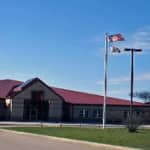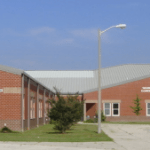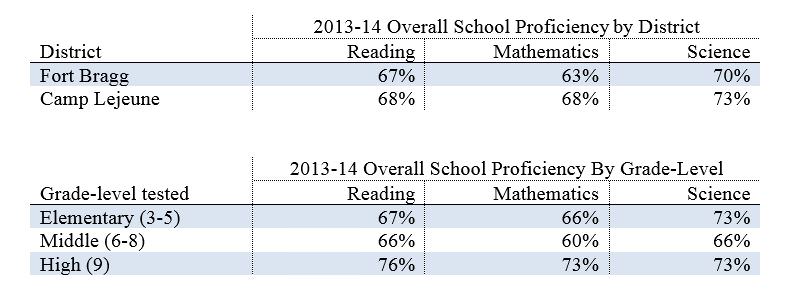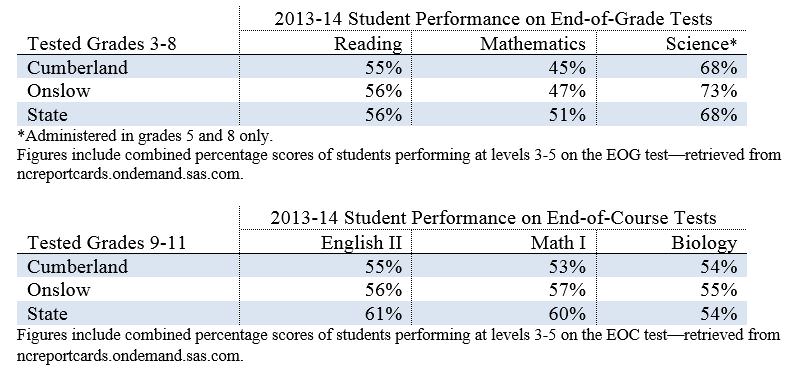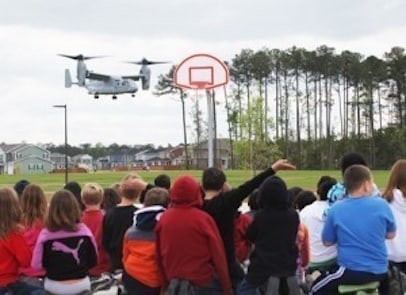
The Federal School System
Department of Defense Education Activity (DoDEA)
…this state is home to two federal school districts — Fort Bragg and Camp Lejeune — that educate more military-connected students than any other state or territory in the U.S.
As a research associate at the Friday Institute for Educational Innovation at North Carolina State University, my work primarily focuses on assessing the implementation and impact of education innovations in public K-12 classrooms. While most of my work keeps me grounded in the public education sector, I was interested in learning more about the federal school system since this state is home to two federal school districts — Fort Bragg and Camp Lejeune — that educate more military-connected students than any other state or territory in the U.S.
I joined the West Virginia Army National Guard in 1999, was deployed to Iraq in 2004-05, and left the service in 2007 with an honorable discharge. Considering my past military service and current work experiences, I have often wondered about the students and schools on military bases.
As I began my research, I was pleasantly surprised to find a wealth of information on the Department of Defense Education Activity (DoDEA) website. This article outlines the history, components, and current status of our federal school system, concluding with some interesting characteristics of the North Carolina federal and public school systems and student populations.
The DoDEA was established in 1992 and is responsible for operating and maintaining our federal schools, combining two distinct school systems—the Department of Defense Dependents Schools (DoDDS) in foreign countries, and the Department of Defense Domestic Dependent Elementary and Secondary Schools (DDESS) in the United States—under one centralized administrative agency.
Domestic Dependent Elementary and Secondary Schools (DDESS)
With the support of legislation in 1821 allowing the operation of schools on military installations, federal schools began to emerge when local public education was unavailable (most often) to children on Army frontier posts. However, as noted in A Study of Schools Serving Military Families in the U.S., “funding for these schools was often irregular and unsystematic.”1
In 1950 funding issues were improved when the federal schools were consolidated, identified as Section 6 schools (named after the legislation, under Section 6 of Public Law No. 81-874), and maintained by the Commissioner of Education. Management of the domestic school system was eventually transferred to the Department of Defense in 1982 and renamed the Domestic Dependent Elementary and Secondary Schools in 1994.
Department of Defense Dependents Schools (DoDDS)
Shortly after the end of World War II, in 1946, the first overseas dependents schools were established on and off military installations in U.S. occupied areas of Germany, Austria, and Japan. Essentially, three school systems were operated separately by the Army, Navy, and Air Force until they were consolidated into the Department of Defense Overseas Dependent School System in 1964.
Under the Dependent School System, each branch was assigned to a geographic area to operate and manage its overseas schools. The Army was responsible for schools in Europe, Africa, and the Middle East; the Air Force operated schools in the Pacific; and the Navy operated schools in the Atlantic.
In 1976, the DoD established the Office of Overseas Dependents Education to assume responsibility for the overseas school system and shortly after, in 1979, it became the Department of Defense Dependents Schools (DoDDS). The three geographic areas (Europe, Pacific, and Atlantic) were subsequently reconfigured into six regions—Atlantic, Germany North, Germany South, Mediterranean, Panama, and the Pacific—each managed by a regional director and district superintendents.2
DoDEA Today
The central agency (DoDEA) is divided into three geographic areas (Europe, Pacific, and the Americas), each managed by a regional director and organized into districts that are headed by superintendents. The DoDEA operates 181 schools across 14 districts in 12 foreign countries, seven states, Guam, and Puerto Rico. The agency supports 76,559 students and 12,305 full time employees (FTEs).3
The domestic program (DoDEA Americas) supports 60 schools across six districts, provides education to 24,300 military-connected students, and employs just over 4,000 staff.
The overseas programs (DoDEA Europe and Pacific) supports 120 schools across eight districts, provides education to nearly 52,300 military-connected students, and employs just under 7,800 staff.
On October 1, 2014, DoDEA started a virtual high school.
North Carolina’s Federal Districts
North Carolina is home to two federal school districts—Fort Bragg and Camp Lejeune—that combined support more schools than any other state/territory under the domestic branch of the DoDEA.
In fact, worldwide, only Germany (37 schools) and Japan (20 schools) host more federal schools than North Carolina (16 schools).
Of the 16 schools in North Carolina, nine are on Fort Bragg (seven elementary and two middle schools) and seven are on Camp Lejeune (five elementary, one middle, and one high school). Combined, these schools support 7,890 military-connected students enrolled in preschool through grade 12.4
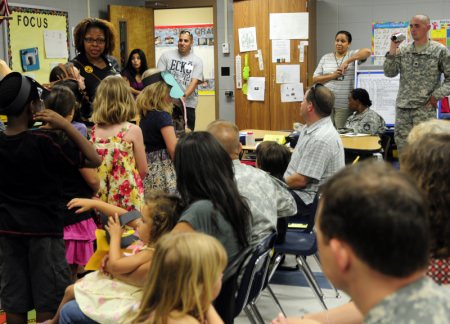
While Fort Bragg is responsible for educating nearly 4,700 students, the surrounding district in Cumberland County educates about 15,000 military/federally-connected students in the public school system, which accounts for about 28 percent of the districts’ total student enrollment of 50,780.5
Camp Lejeune is responsible for educating just fewer than 3,200 students while the surrounding district in Onslow County educates just over 10,000 military/federally-connected students. Forty percent of the 25,564 students enrolled in Onslow County Schools have parents (or legal guardians) that either serve in the military or work for the federal government in some capacity. 6
Fortunately, for districts like Cumberland and Onslow County, the Department of Education Impact Aid Program provides financial assistance to school districts that educate at least 400 military/federally-connected students or if they make up at least 3 percent of the district’s overall enrollment (based on total average daily attendance).7
The Impact Aid Program also supports districts like Wayne County where Seymour Johnson Air Force Base is located. There are no federal schools on base—most likely due to the small military-connected student population and the close proximity to the city of Goldsboro and its public schools—so all military-connected children attend the local public (or private) schools. According to the school liaison for the base, just over 1,500 students are identified as military/federally-connected in the public school system. Overall, the district educates just fewer than 19,000 students.8
North Carolina Federal and Public School Characteristics
It is clear that North Carolina is home to a large number of military families in parallel with a large number of military-connected children either attending a federal or public school. Due in part to the variability between the federal and public school student population sizes (among other factors), it would be misleading to directly compare achievement between student groups; however, examining each individual group’s characteristics could lead to some interesting systemic questions about the qualities of each school system and their impact on student learning.
All students attending federal schools in grades 3-11 complete the TerraNova assessment in the spring of each school year. In the Fort Bragg and Camp Lejeune districts, students do fairly well on their assessments with proficiency percentages ranging, at the district level, between 63 percent and 73 percent for the three tested subjects—Reading, Mathematics, and Science.9
North Carolina’s public school students in grades 3-8 complete the End-of-Grade (EOG) assessment. The most recent statewide student proficiency percentages for the EOG are 56 percent for Reading, 51 percent for Mathematics, and 68 percent for Science. Students in grades 9-11 complete the End-of-Course (EOC) test and statewide student proficiency for the EOC is 61 percent for English II, 60 percent for Math I, and 54 percent for Biology.
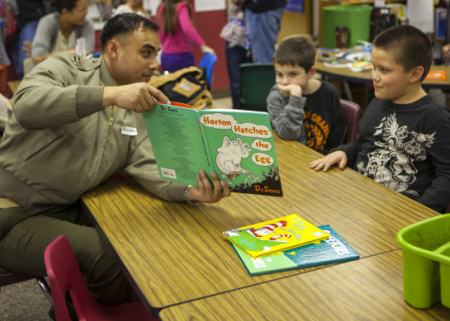
Acknowledging that each school system is independent of the other, adheres to separate standards, and implements different tests for different grade levels, it is still apparent that students attending federal schools in North Carolina are slightly more successful on their respective end of year assessments.
Looking at the differences between student populations, our federal schools in North Carolina have a greater proportion of Hispanic/Latino students than the surrounding public school district (i.e., Cumberland County and Onslow County Schools) and statewide student populations. In addition, there are a smaller proportion of African American students within the federal school student population compared to the public school student population (at both the district and state level).
While it is interesting to note differences between the federal and public school systems’ student demographics and standardized testing performance, other characteristics of the federal school system are still a mystery to the average civilian. It would be interesting to further examine these characteristics to help build a better understanding of the federal schools operating in the state. For example, how much of the military culture spills over to the federal school classroom and does that have an impact on student discipline and overall behavior?
What questions do you have about the federal schools operating in North Carolina?



